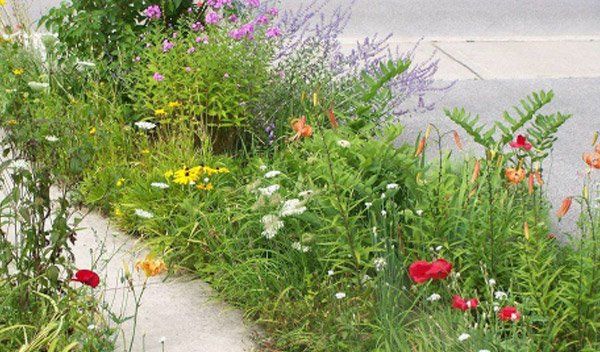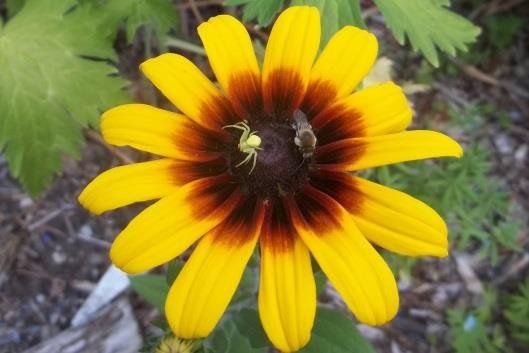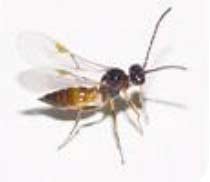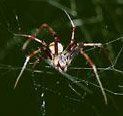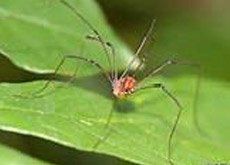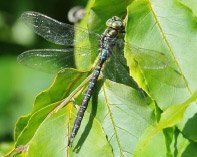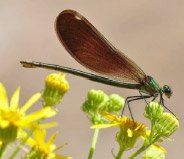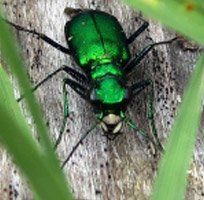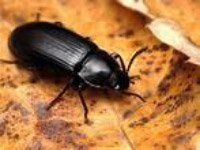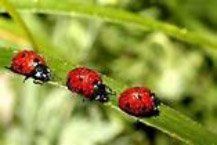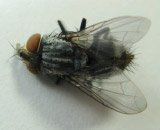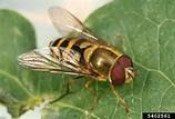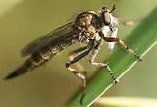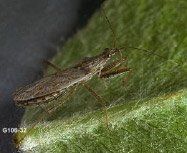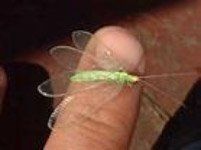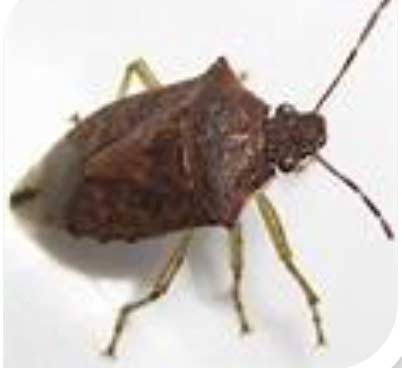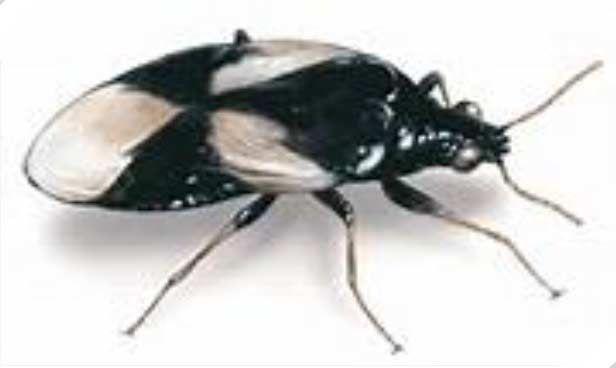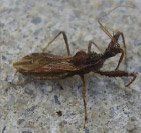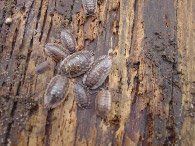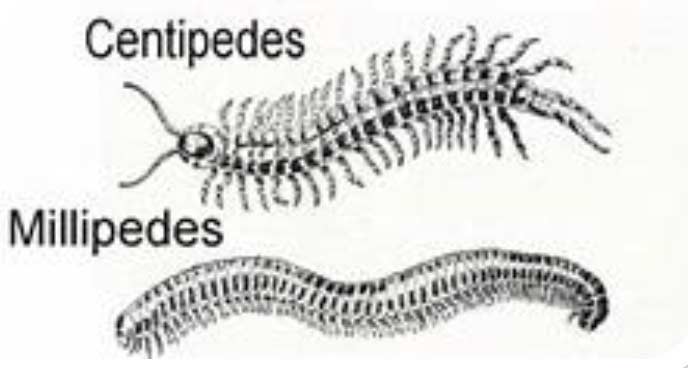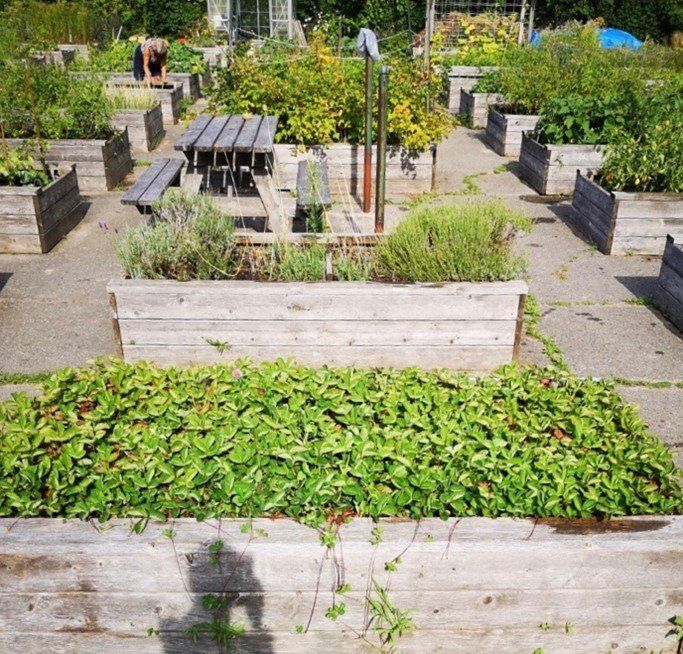Pest Control by Mother Nature — Beneficial Bugs
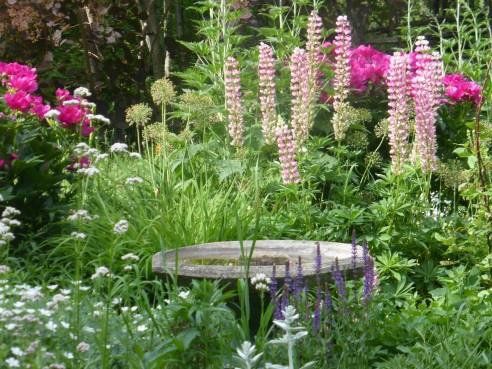
Do you remember the line from the old “Raid” commercial “The only good bug is a dead bug”? Happily, the practice of controlling insects in the garden by killing them all with chemical pesticides is no longer acceptable. We are looking to more natural methods of dealing with pests and diseases, and “good bugs” are important allies in the struggle.
Good bugs are not just dead ones. In fact, 90% of bugs are beneficial in the garden. They are natural predators who eat or deter the bad bugs. And, as a bonus, some of these good bugs are also pollinators!
How do you attract these good bugs to your garden? Thankfully, the answer doesn’t involve a huge outlay of money or time. Beneficial bugs will find your garden if you provide food, water and shelter. Plant a variety of native and non-native plants, and include nectar producing and pollinator-friendly plants. Incorporate a bird bath or water feature, and use natural materials such as rocks and dead branches. By leaving your garden a bit messy, using compost and natural mulch, and avoiding chemical pesticides, you will make your space a welcoming spot, and beneficial bugs will move in and get right to work, above and below the ground. The body content of your post goes here. To edit this text, click on it and delete this default text and start typing your own or paste your own from a different source.
Being predators as well as pollinators, every
ant, wasp
and
bee is a good insect in the garden. Wasps aren’t just a nuisance at your backyard barbecues, they are regarded as the most important insect group for the control of garden pests. As a predator, the
parasitic wasp¹ is at the top of the list. It attacks the eggs of pests such as the leaf miner.
In the garden every spider is a good spider! While technically not an insect,
spiders¹ are vital to a healthy garden. Spiders are always in search of prey, especially the adult insects that are attacking plants. To complicate things a bit, the
Daddy longlegs (Harvestmen) ¹ is not a spider. These delicate creatures also prey on insects and mites.
Now for the introductions!
Say hello to these good bugs that you would like to see in your garden.
Dragonflies and damselflies:
These insects are good indicators of healthy freshwater habitats as they will disappear when water becomes polluted.
Shadow Darner Dragonfly¹
The Darner is one of the most common in
Southwestern Ontario and by size the largest.
Described as voracious, it will eat any small insect, particularly mosquitoes. It will also
tackle horseflies.
Beetles:
Many beetles play an important role in the recycling of animal dung and dead animals.
Some are also predators which means they eat bad bugs.
NOTE: Information on using nematodes to deter harmful beetles (grubs & wireworms) is included with Reference Materials & Work Cited.
Tiger Beetle¹
“Ontario's most familiar tiger beetle is a metallic green species, an iridescent insect which regularly provides a flash of colour to spring woodland walks. Cicindela sexguttata, called the Six-spotted Tiger Beetle despite the fact that some individuals have only 5, 2, or even no white spots, usually appears early in spring, having spent the winter as an adult hidden in the same burrow it had pupated in the previous fall (a very few adults can still be found in fall). Like all our adult tiger beetles, Six-spotted Tiger Beetles are voracious hunters that hang out on sunny vantage points using their massive eyes to scan for potential prey, and for potential predators.”
Dr. S. Marshall, U of Guelph³
Ground Beetles¹
These are beetles that live in the soil and are among the most abundant predators. Some
are able to consume their own weight in
insects every day. They feed on slugs, snails, cutworms, root maggots and the Colorado potato beetle larvae. Attract them with a perennial ground cover, leaf mulch, stones and branches.
Lady Beetles¹
“Often called the best bug, Lady Beetles are
beneficial in both their larval and adult stages. They attack soft-bodied insects including aphids, scale insects, mealy bugs, the Colorado potato bug larvae and all sorts of insect eggs and spider mites.”
D. Dobbie, Ontario Gardener⁴
Plant pollinator-friendly plants to attract Lady Beetles. They need to feed on flower nectar and pollen before they can reproduce.
Flies:
Flies are important pollinators. They also feed on dead carcasses so that nutrients are recycled back into the environment.
Tachinid Flies¹
According to OMAFRA⁵ Tachinid flies as a group have a very large host range that includes many caterpillar pests, beetles, bees, wasps, sawflies, stink bugs and grasshoppers. They lay eggs in other insects.
Hover Flies¹
Adult Hover flies are important pollinators (e.g. strawberries & raspberries). They are helpful in early spring before other beneficial bugs are active. According to OMAFRA⁵ a female lays up to 400 eggs in aphid colonies. Each larva consumes more than 500 aphids and may also feed on scales, mites, small caterpillars, pollen, nectar and aphid honeydew.
Robber Flies¹
In the adult stage Robber flies literally hang from branches or objects near the ground to pounce on their prey. They are fast and noisy flyers and can catch other flying insects. In the larvae stage they live in the ground and feed on other larvae in the soil or other insects in decaying matter.
Predatory Bugs:
These bugs get their name because they prey on many insects, including the tomato hornworms, thrips and spider mites. They also like to eat insects’ eggs, leafhopper nymphs and other small caterpillars. To attract predatory bugs plant shrubs, grasses and other plants that provide shelter.
Damsel Bugs¹
Damsel Bugs feed on a wide range of plant bugs. e.g. spittlebugs, leaf beetle eggs and larvae, leaf hoppers, sawflies and spider mites.
Lacewings¹
The Lacewings shown is in its adult stage. It flits from flower to flower feeding on pollen and nectar. In its larval stage, it is called the aphid lion (aphid wolf). The larvae eat every soft-bodied thing in its path, paralyzing its prey with deadly venom, then sucking out its juices.
D.Dobbie, Ontario Gardener⁴
Spined Soldier Bug¹
Look for the pointed shoulders to identify the Spined Soldier Bug. This bug has an appetite
for all kinds of sawflies, aphids, caterpillars
and larvae. Specifically, it also eats the Colorado potato & Japanese beetles.
Minute Pirate Bug¹
The Minute Pirate Bug uses its piercing-sucking mouthparts to subdue & feed on their prey. According to OMAFRA⁵ this bug is an important predator in numerous agricultural crops. Each bug consumes 30 or more spider mites/day. When pest populations are low, they feed on pollen and plant juices.
Sowbugs, Centipedes and Millipedes: “Centipedes, millipedes, sowbugs and pillbugs are arthropods (not insects). They do enjoy the same living conditions as insects. These creatures are not harmful. They are merely unattractive and considered a nuisance, especially when found indoors.”
Health Canada⁷
Sowbugs (Wood Lice)¹
Sowbugs eat decaying plant material.
“These tiny land crustaceans need moist conditions to survive, and like to live under rocks or debris where they feed on decaying organic matter. They usually die quickly once inside home because moisture levels are not high enough for them.” Health Canada⁷
Latest Blog Posts
